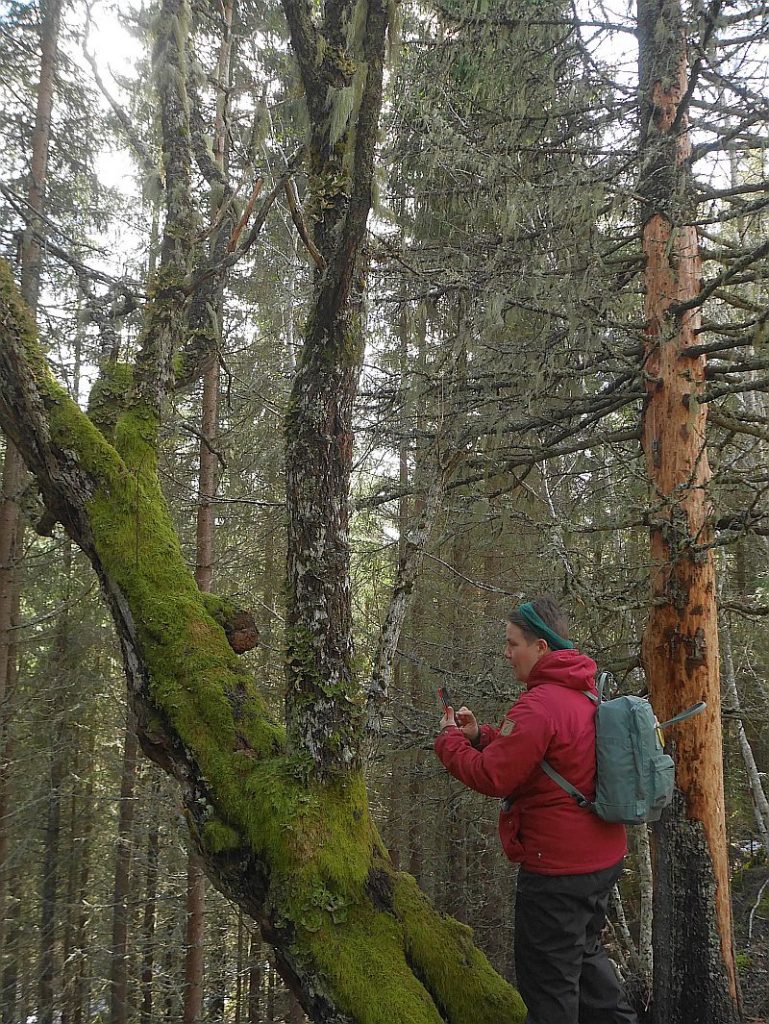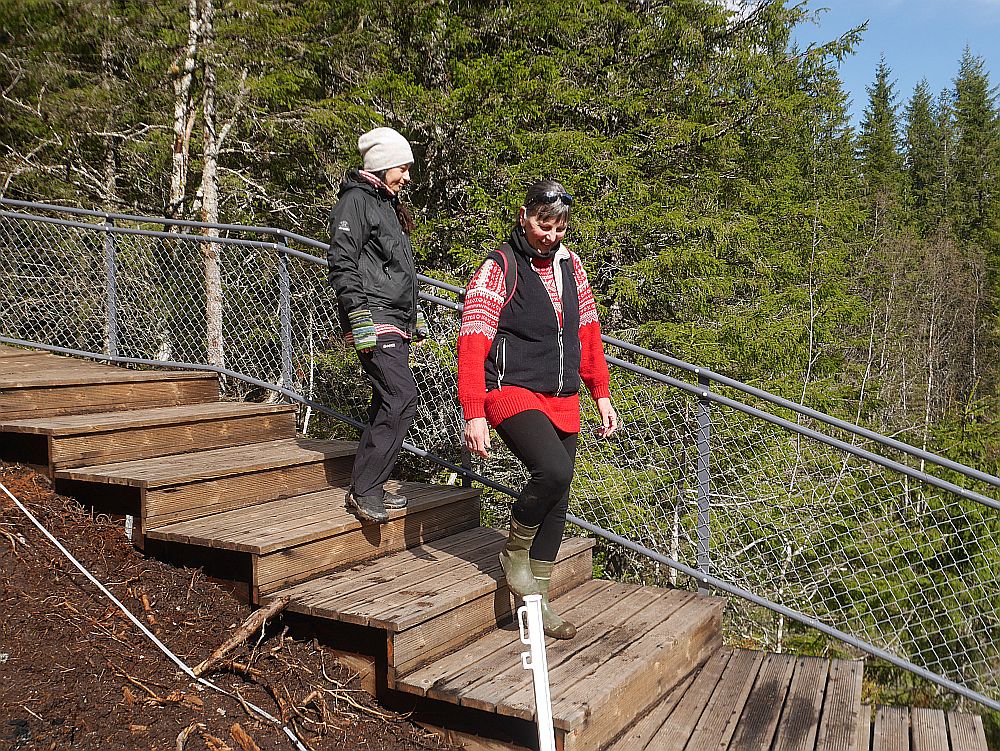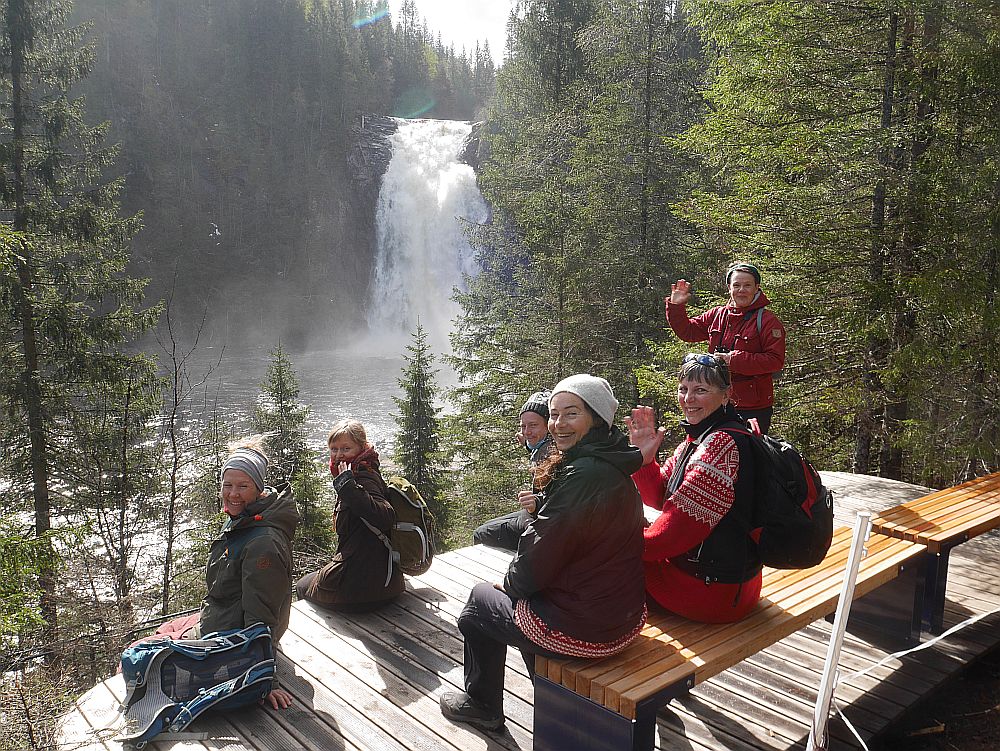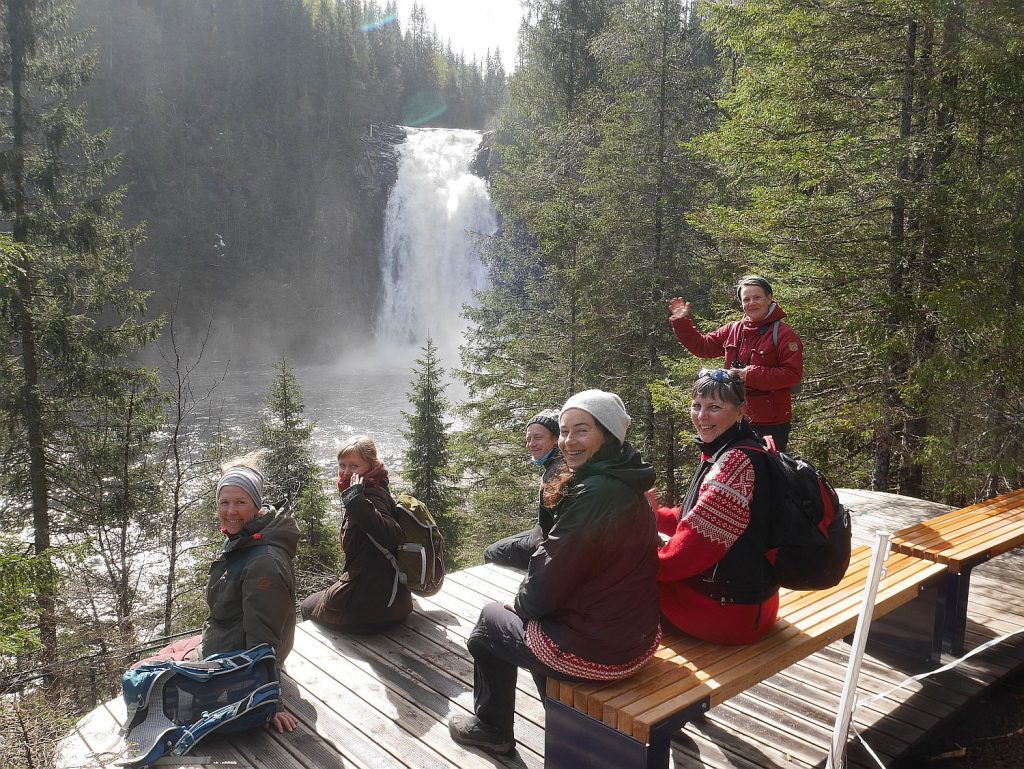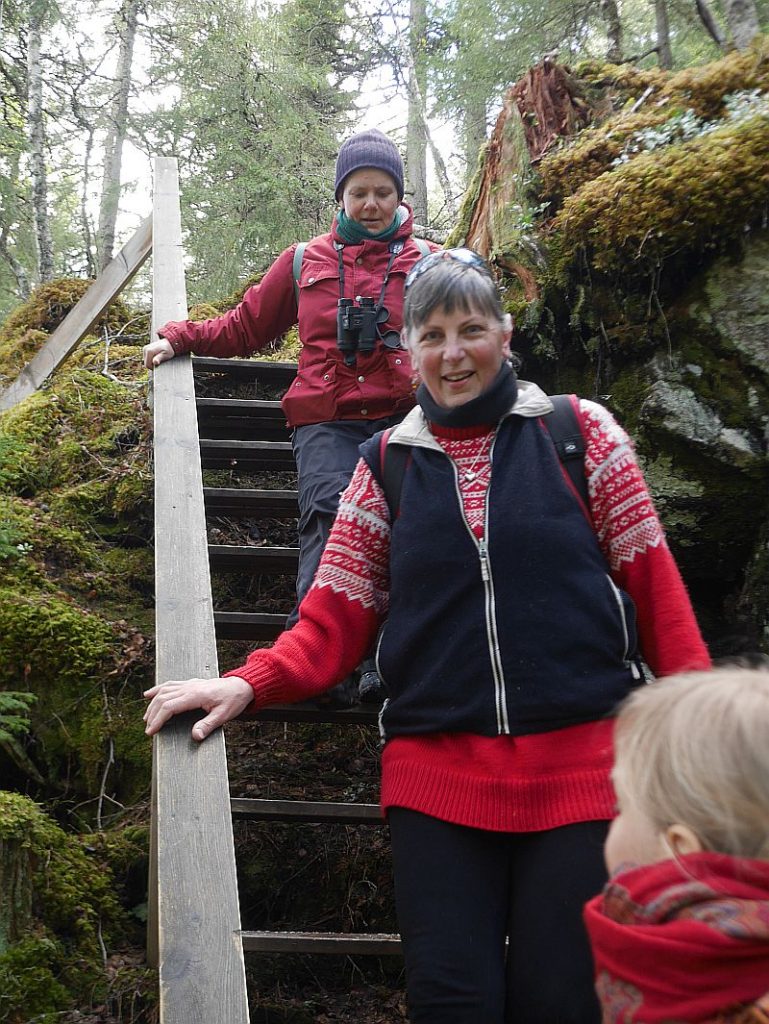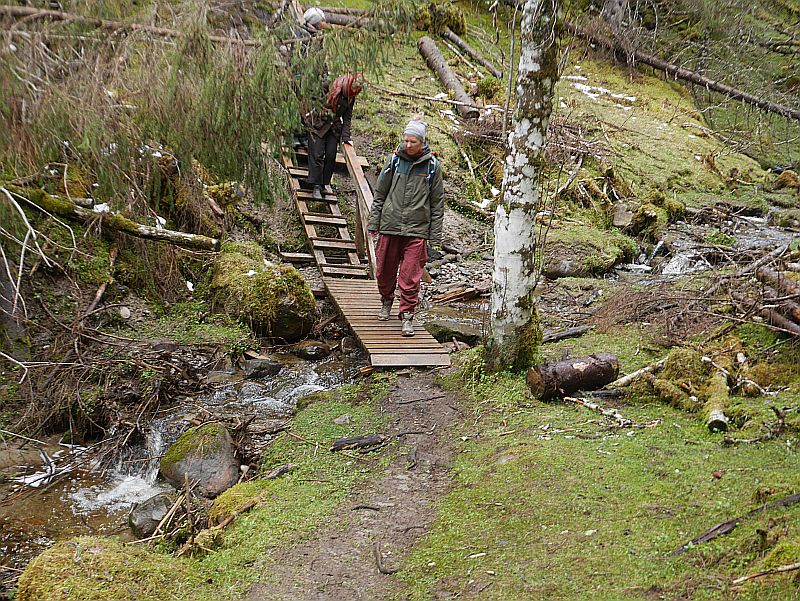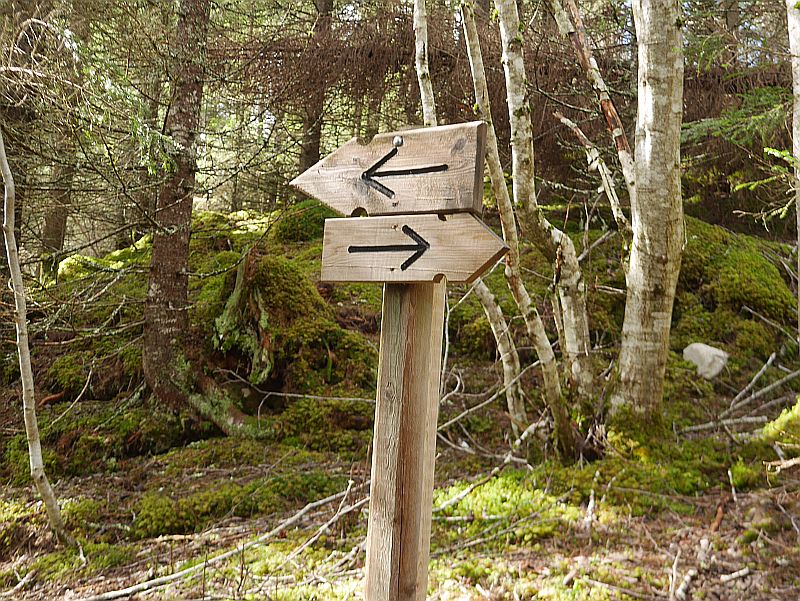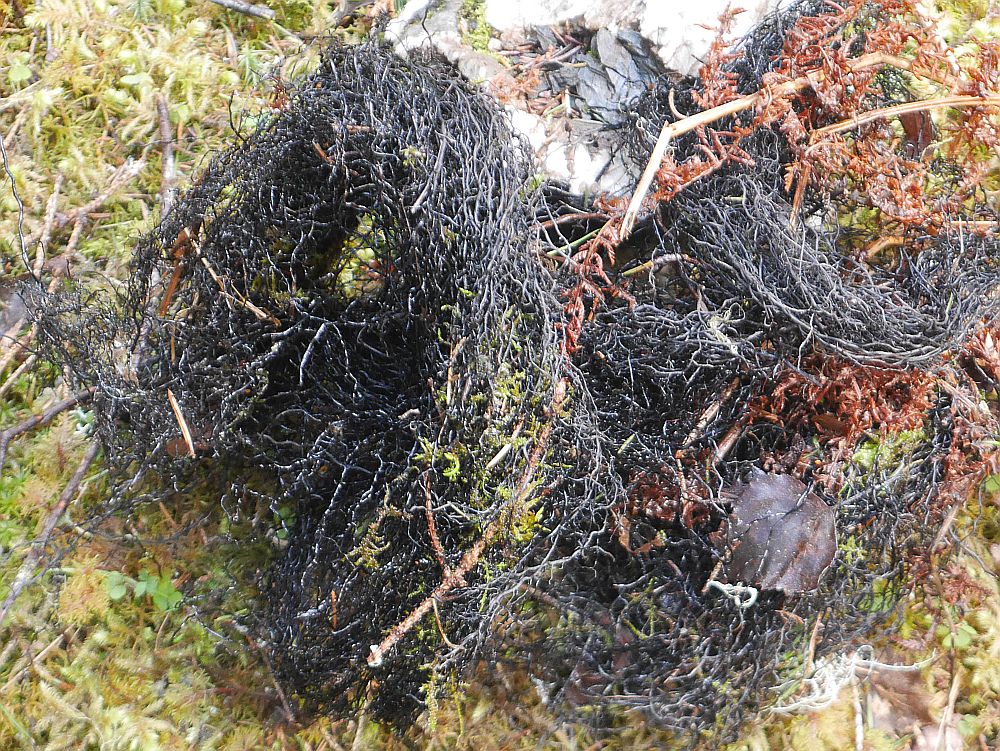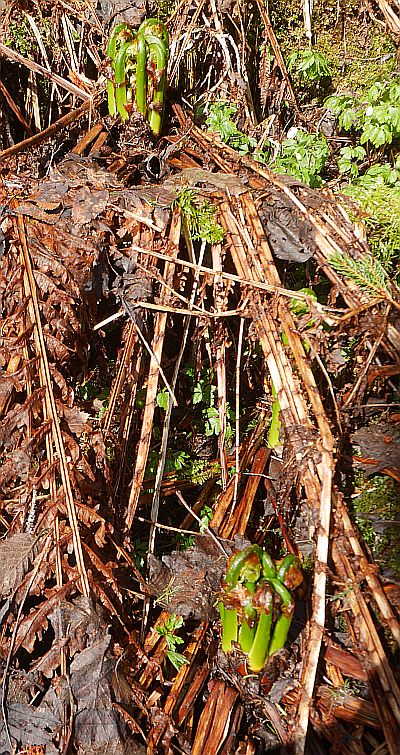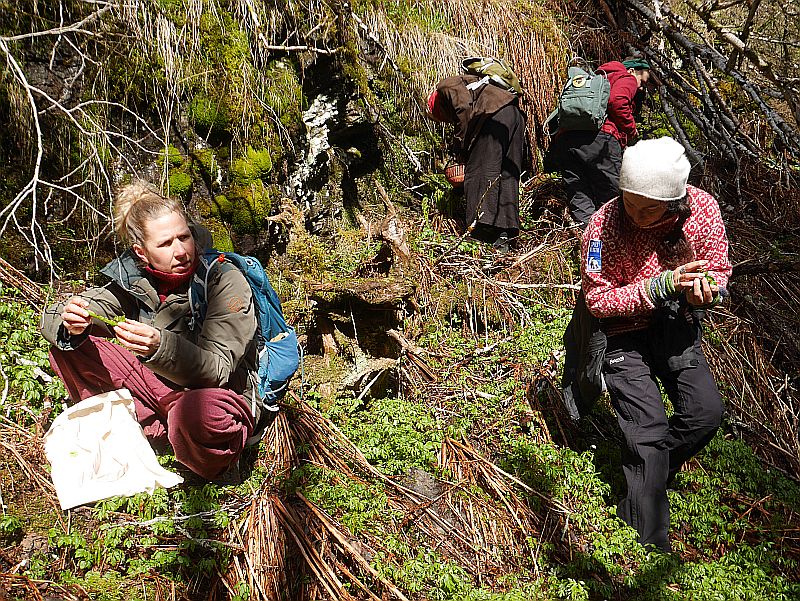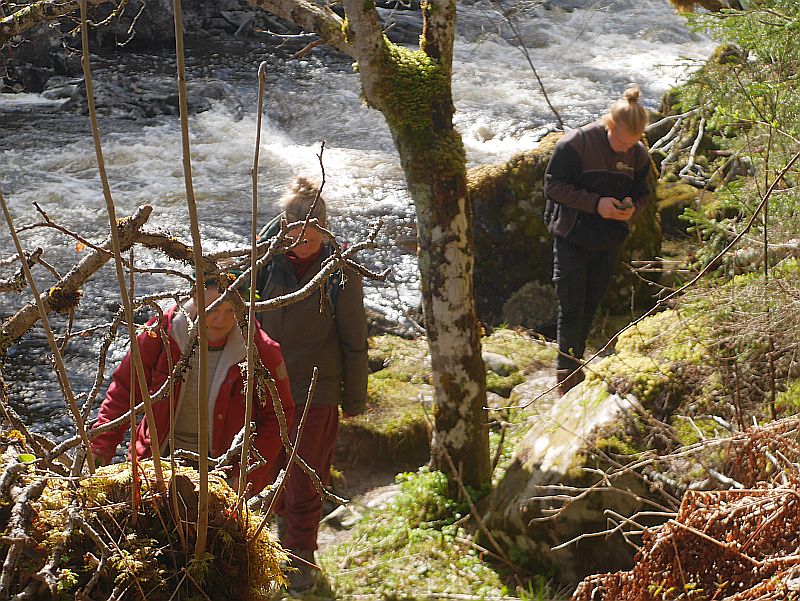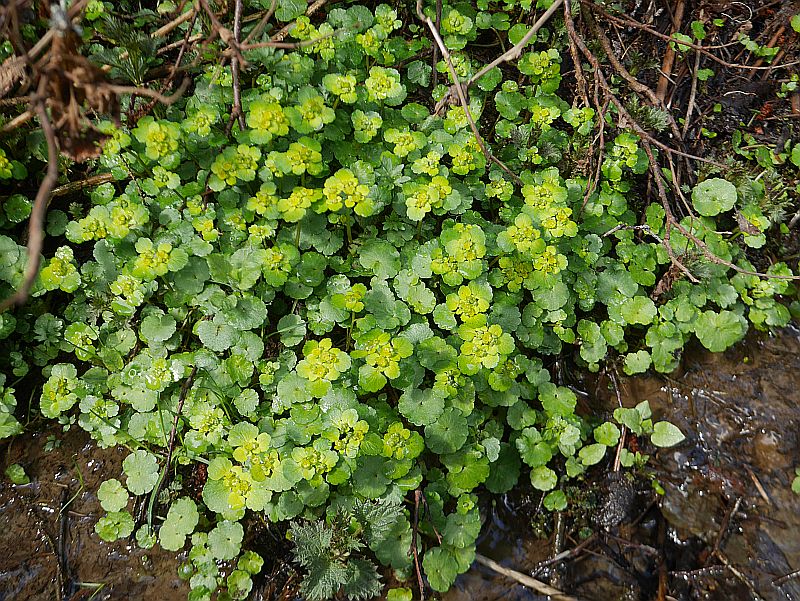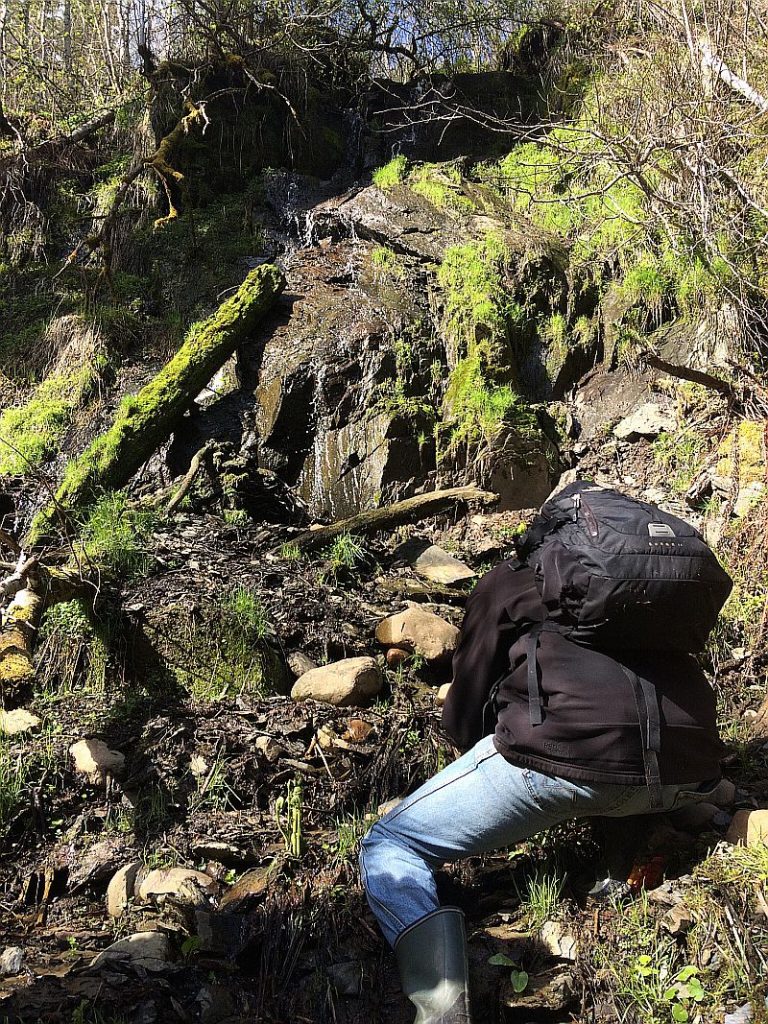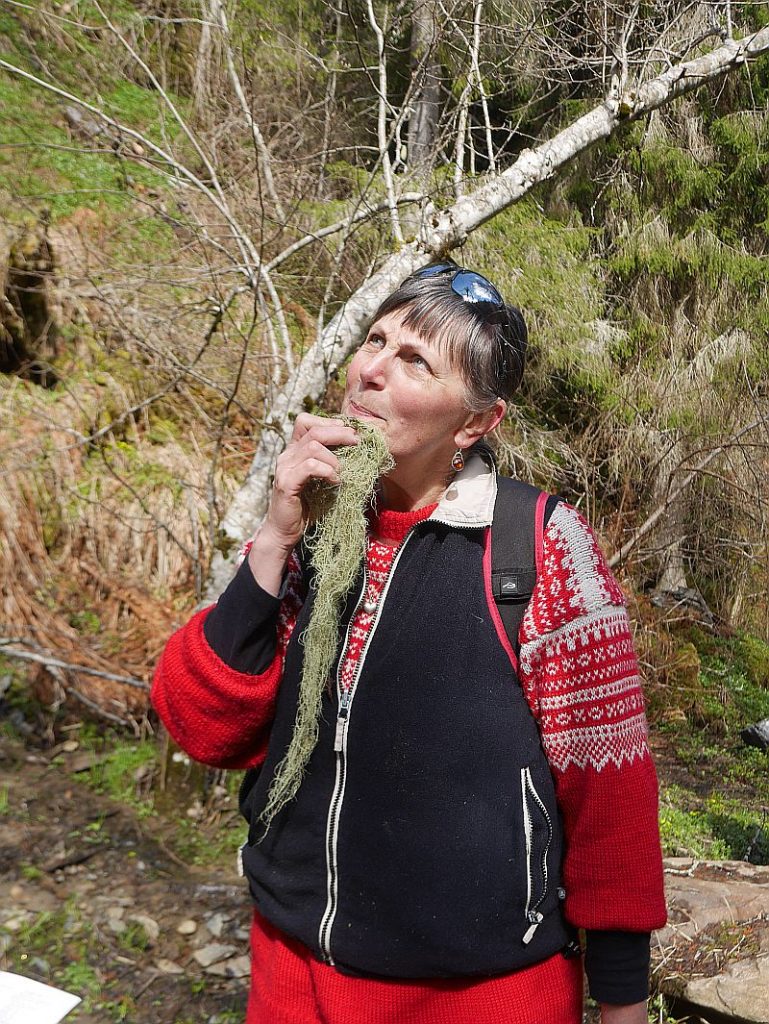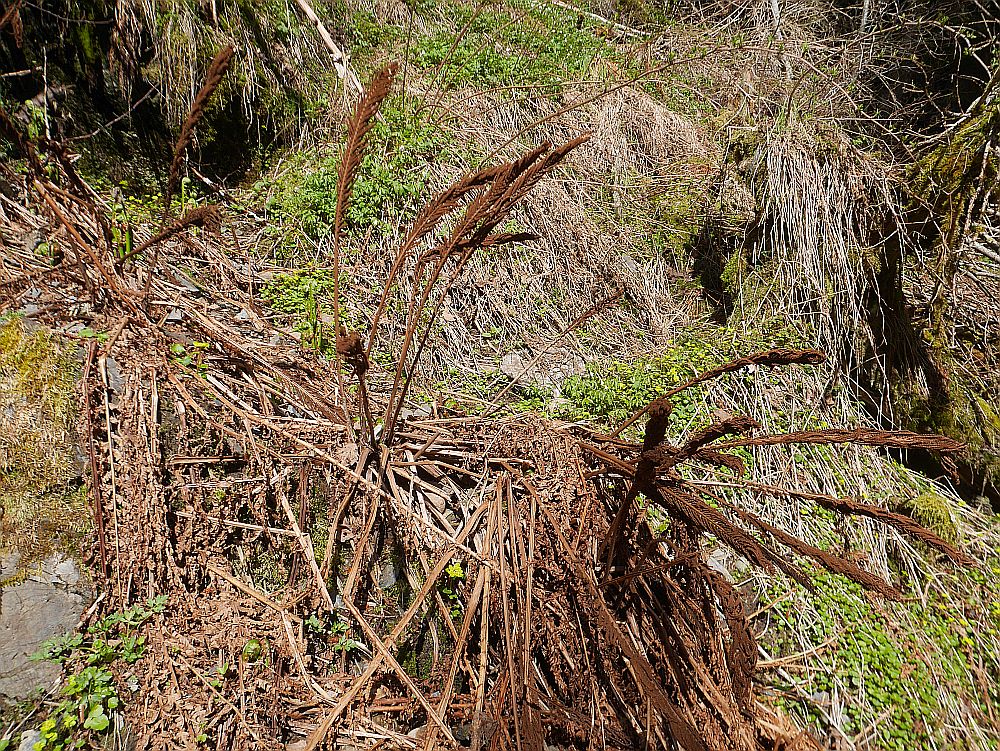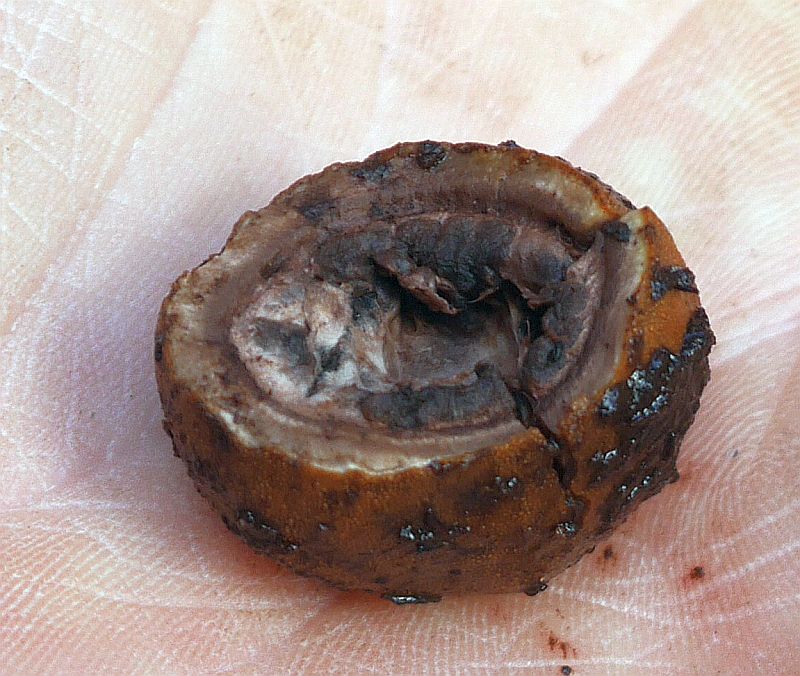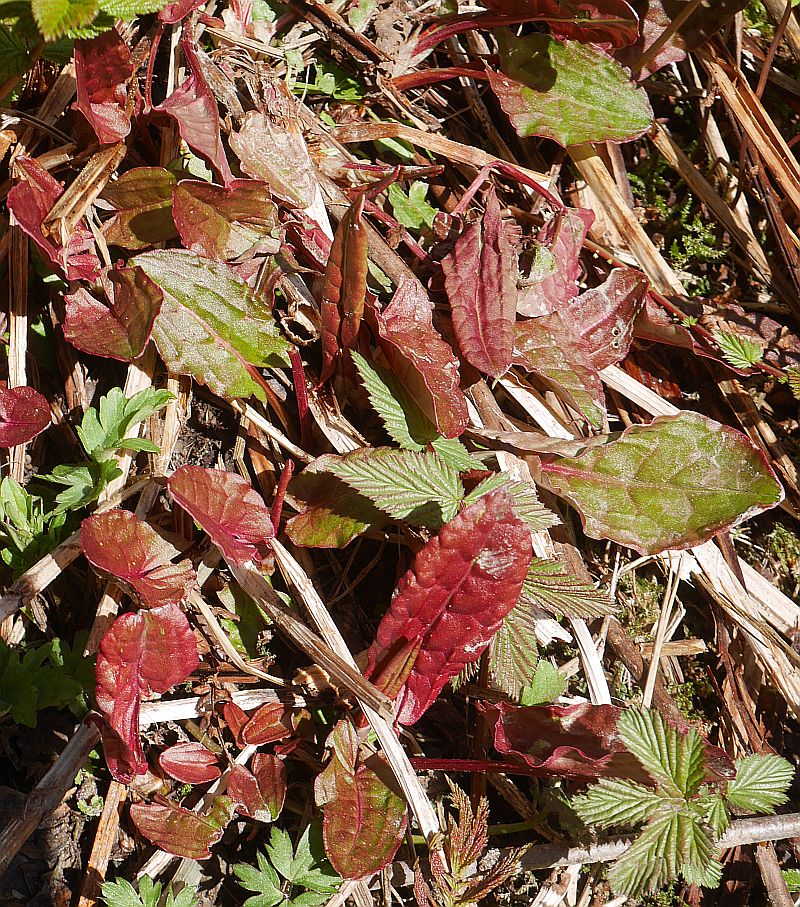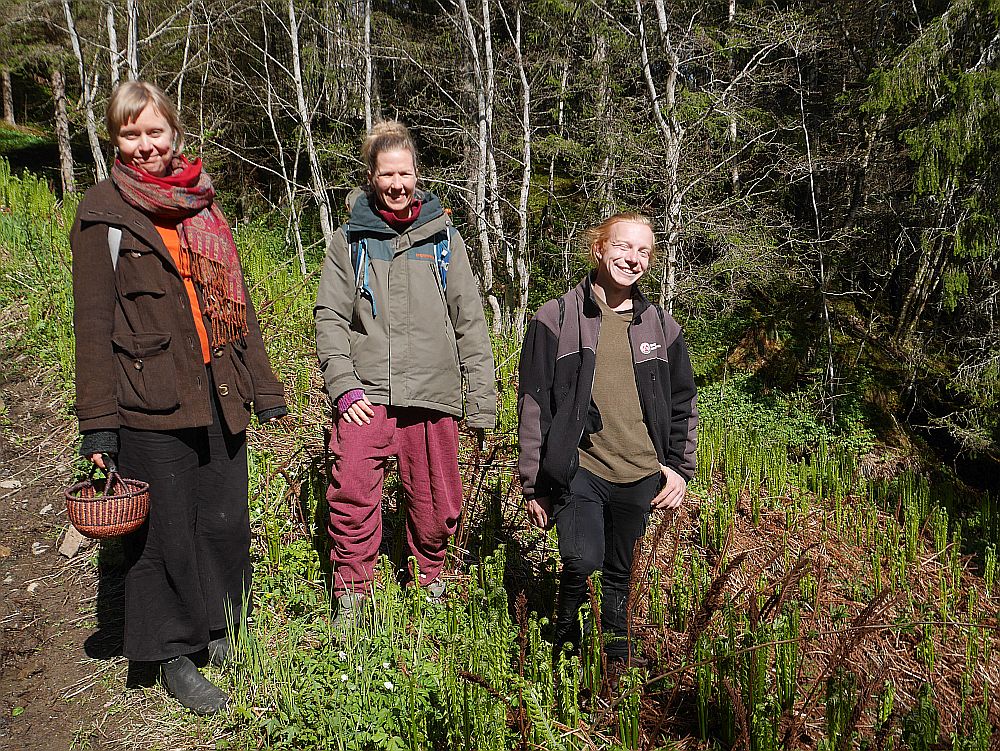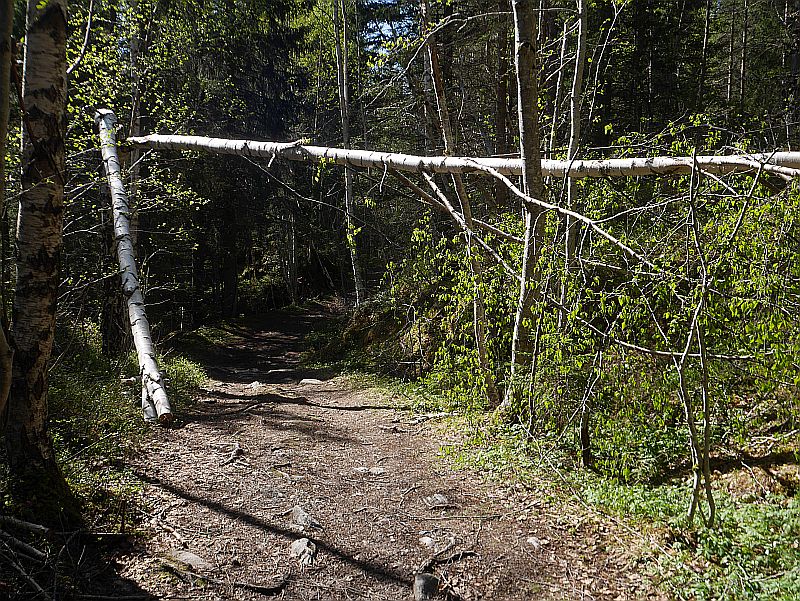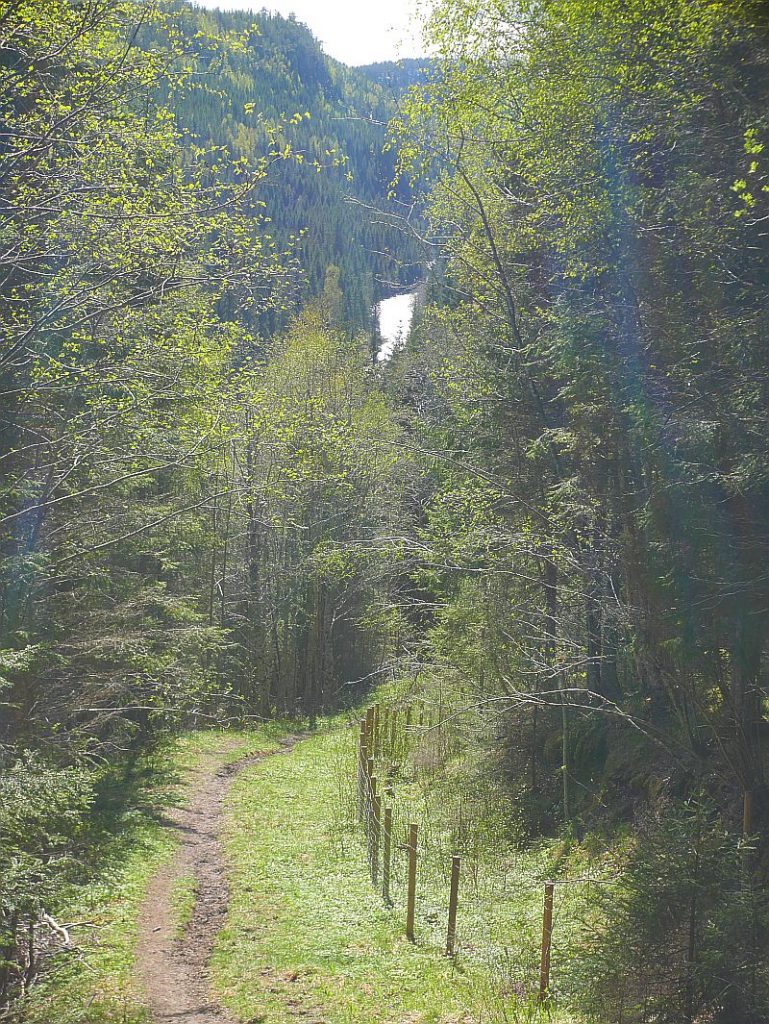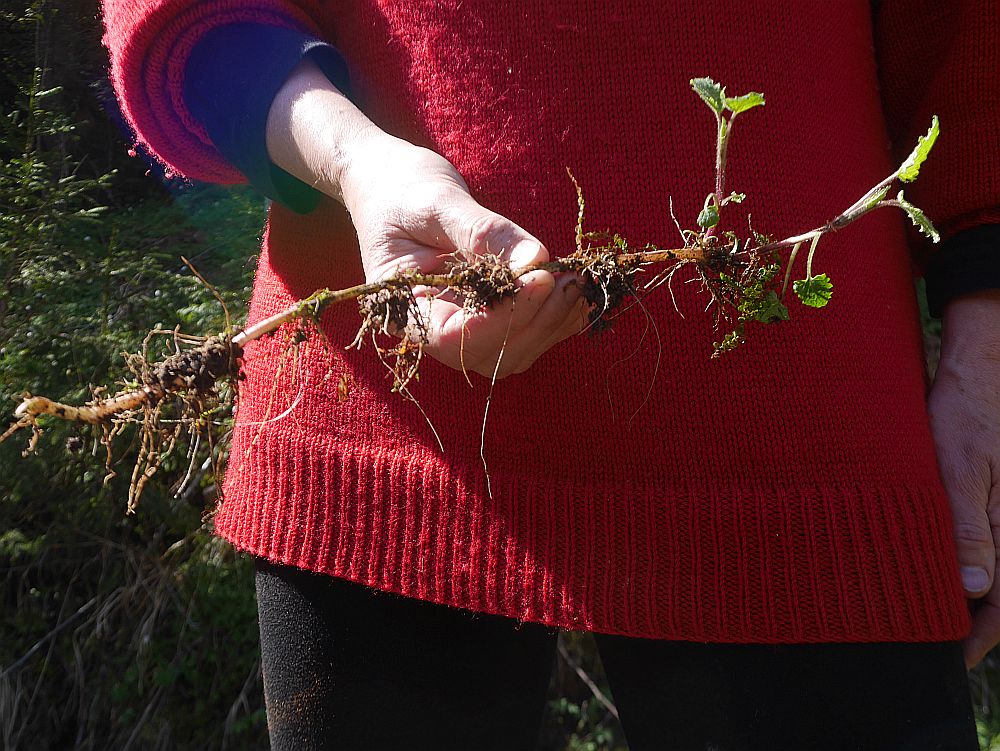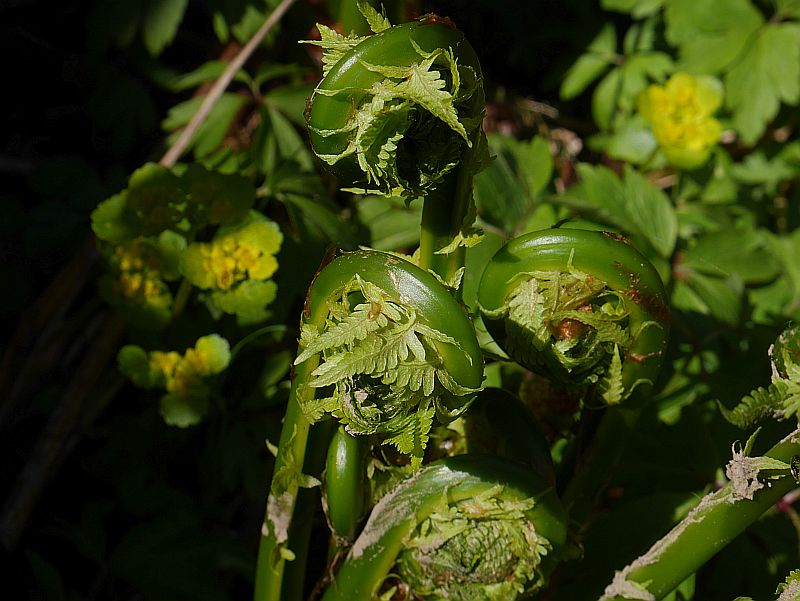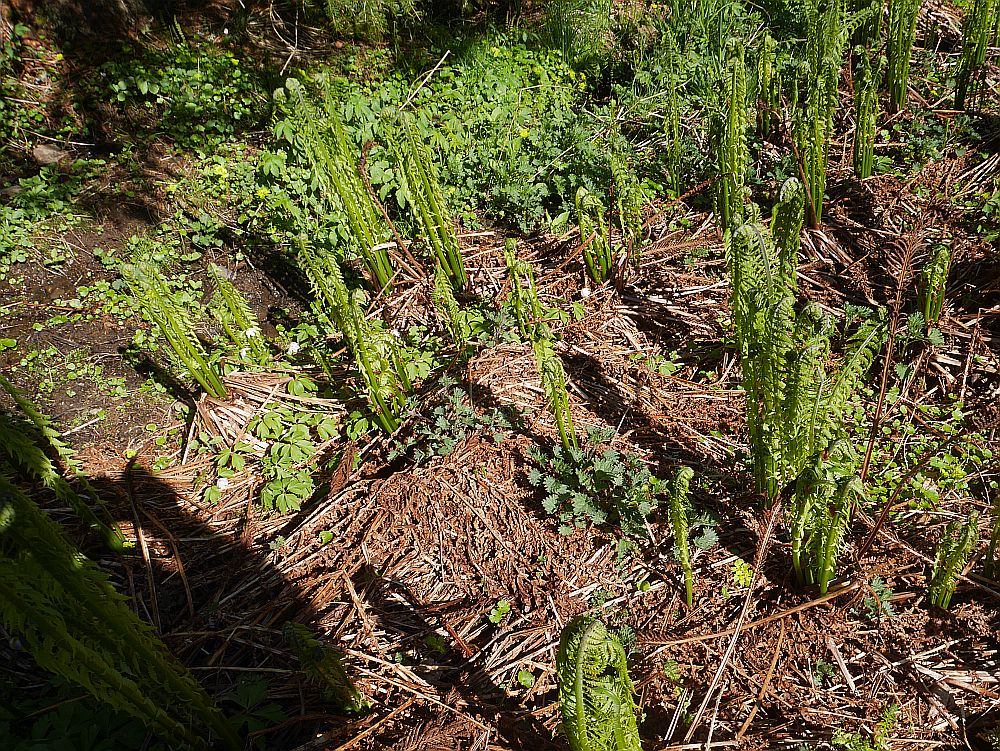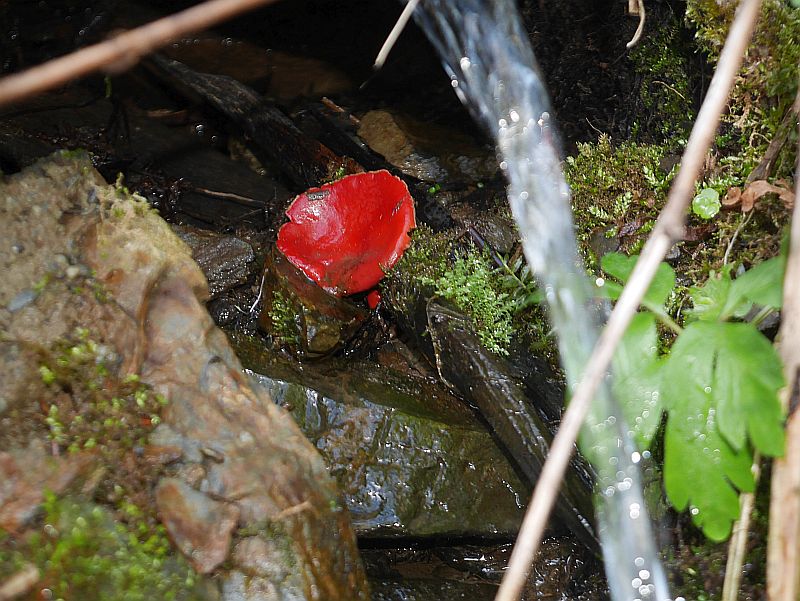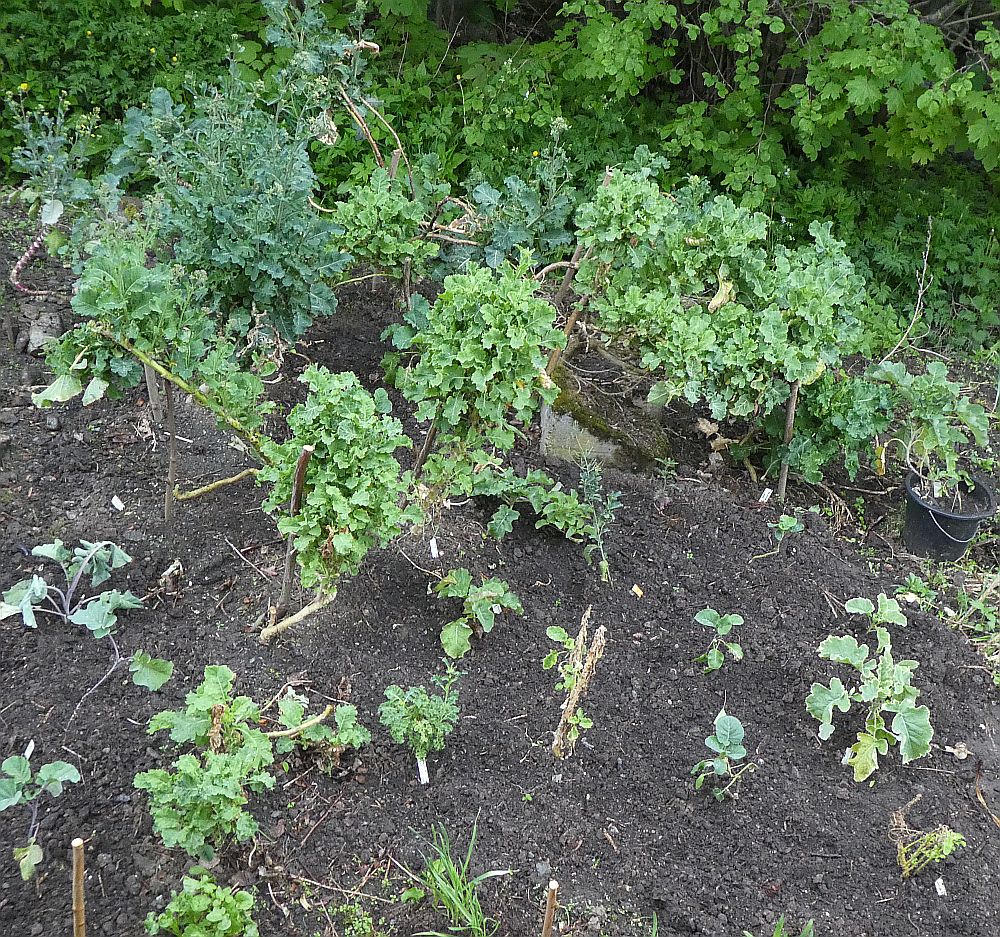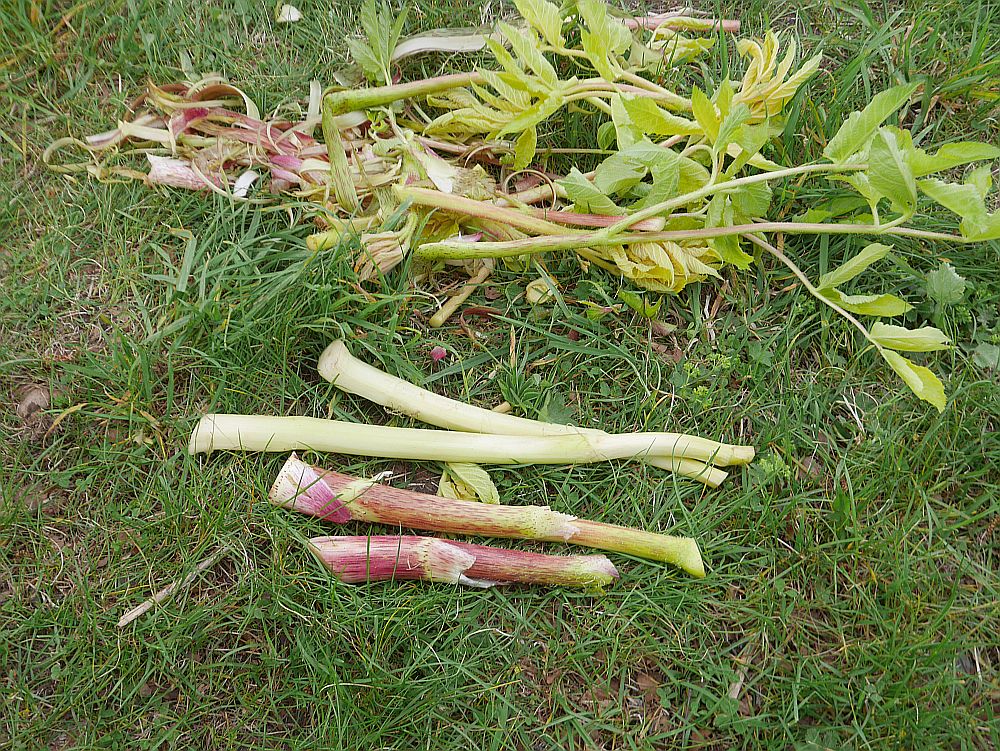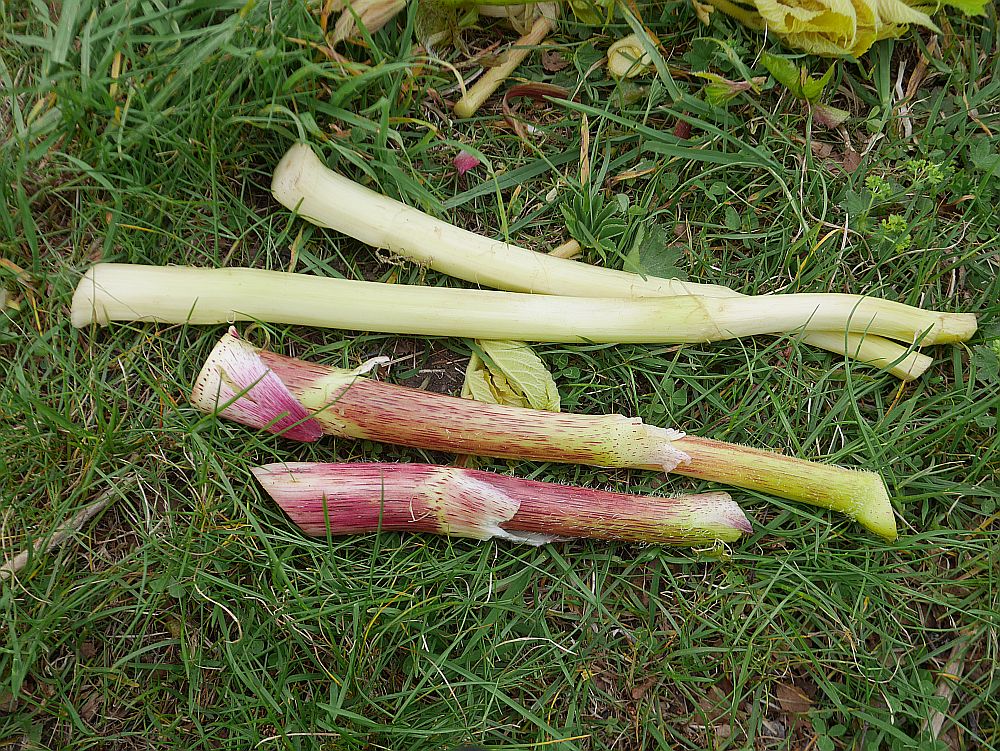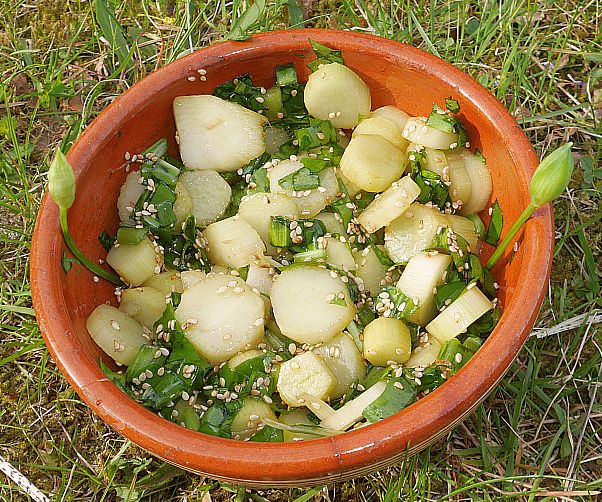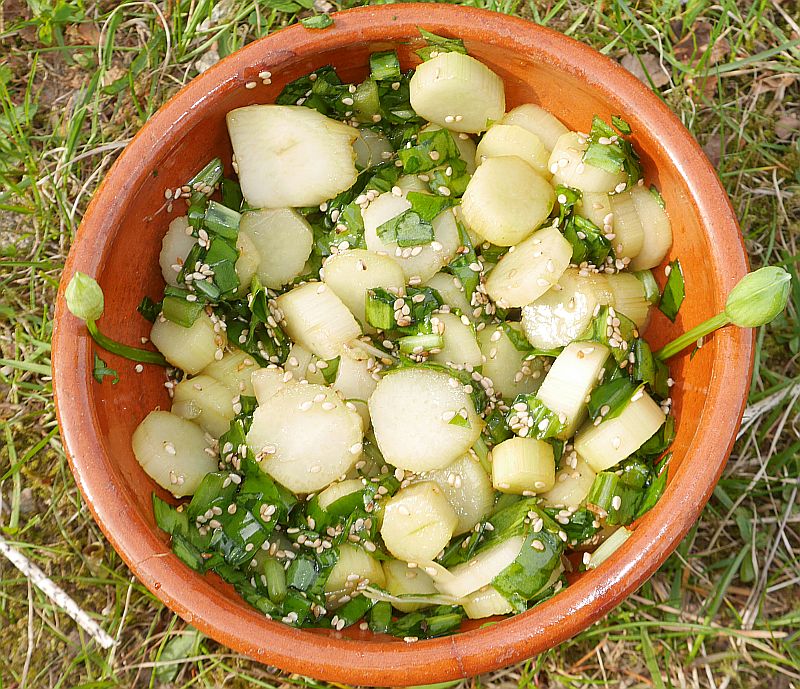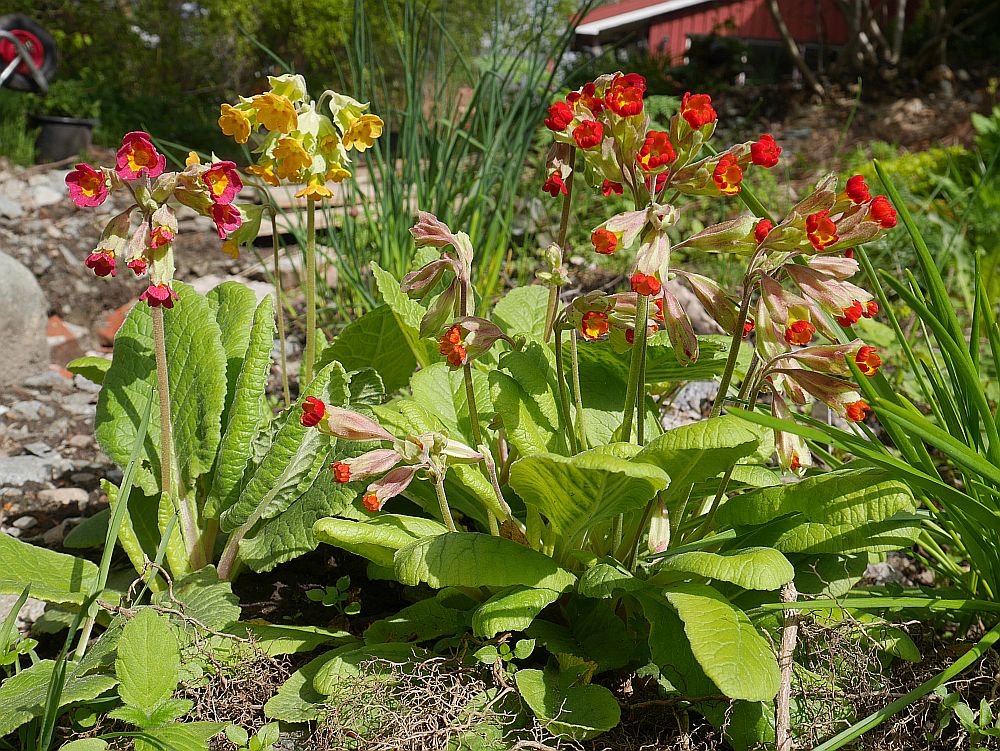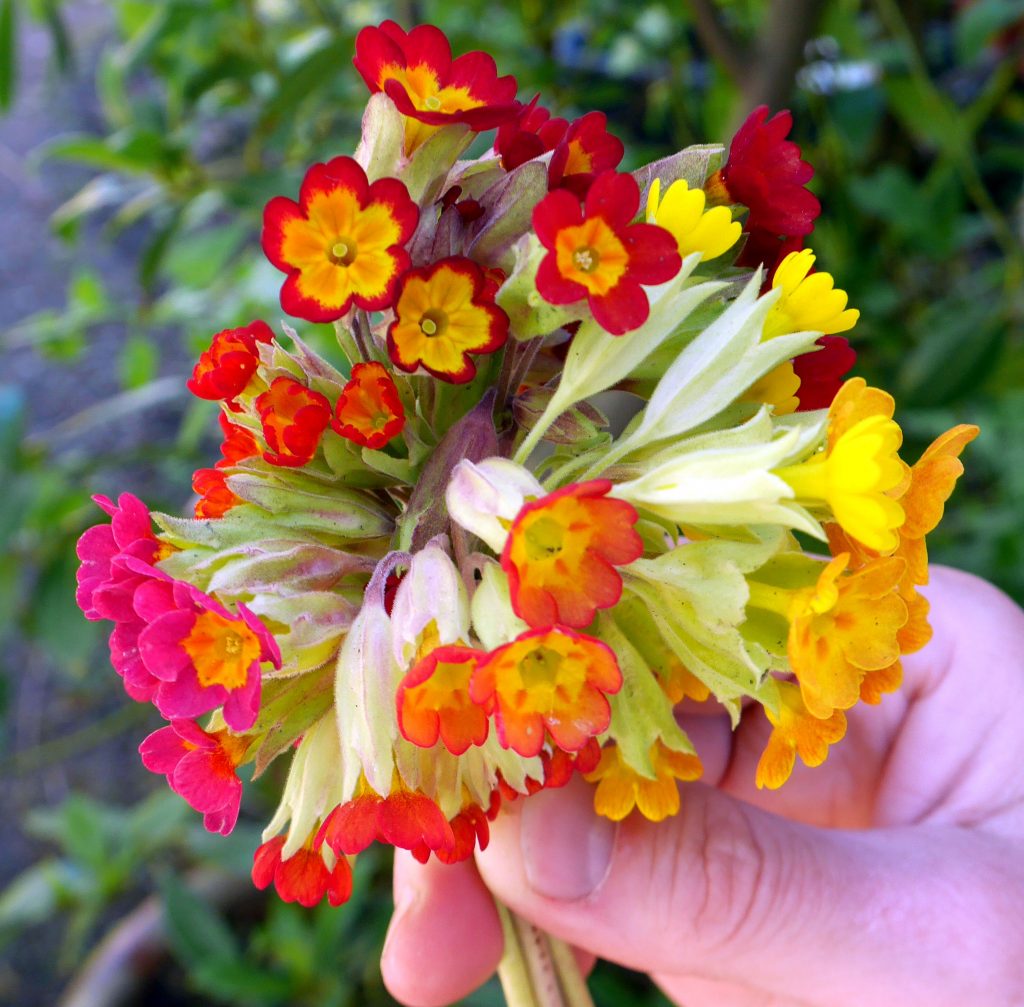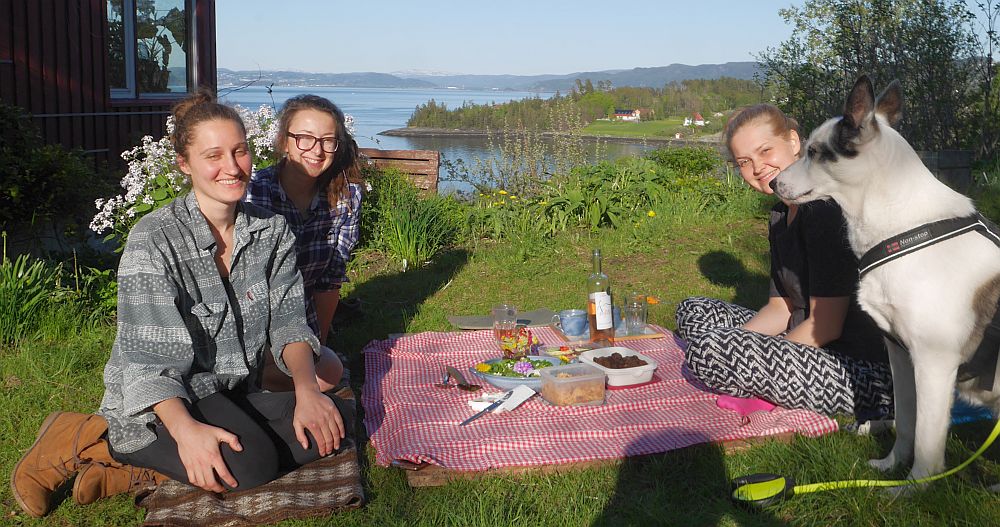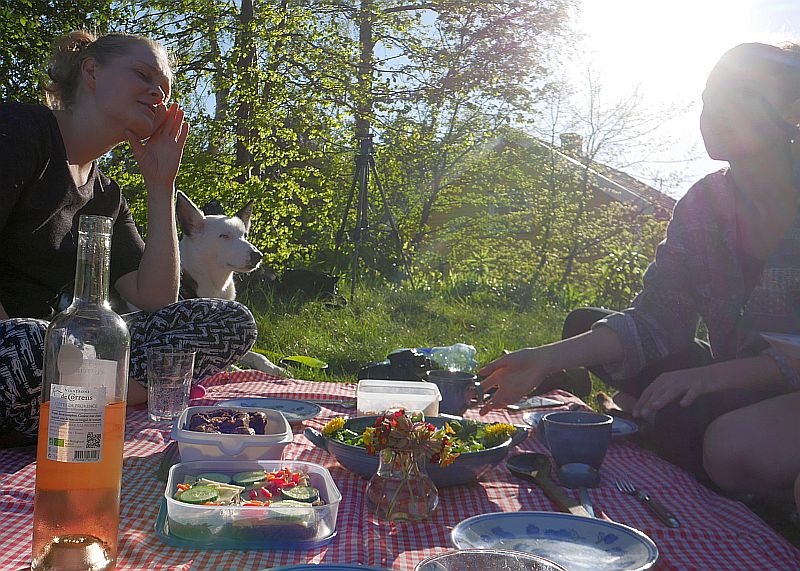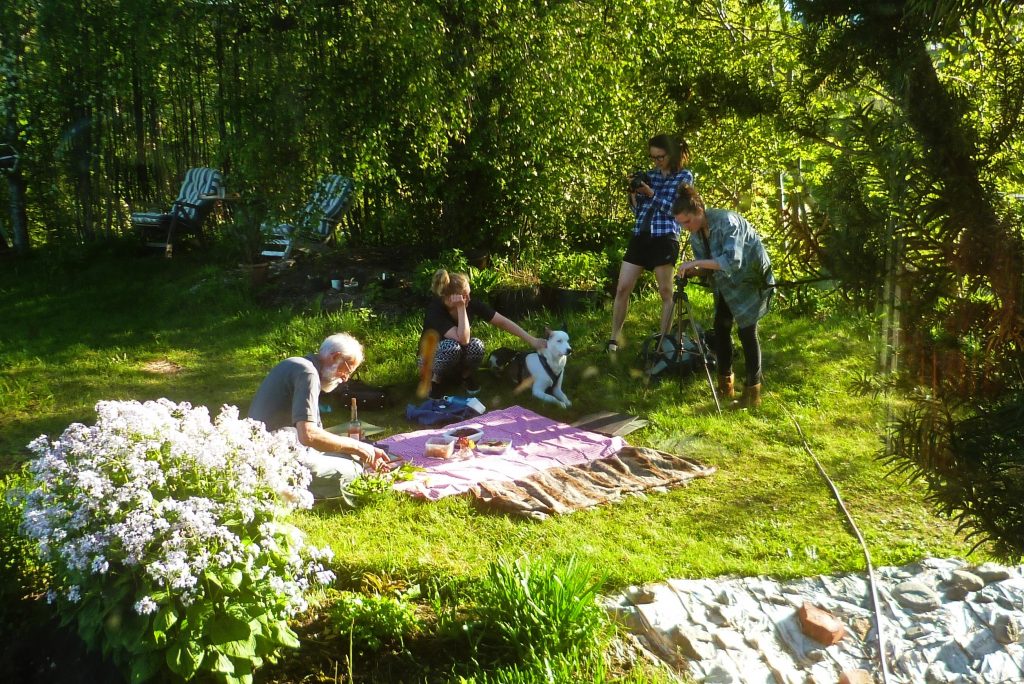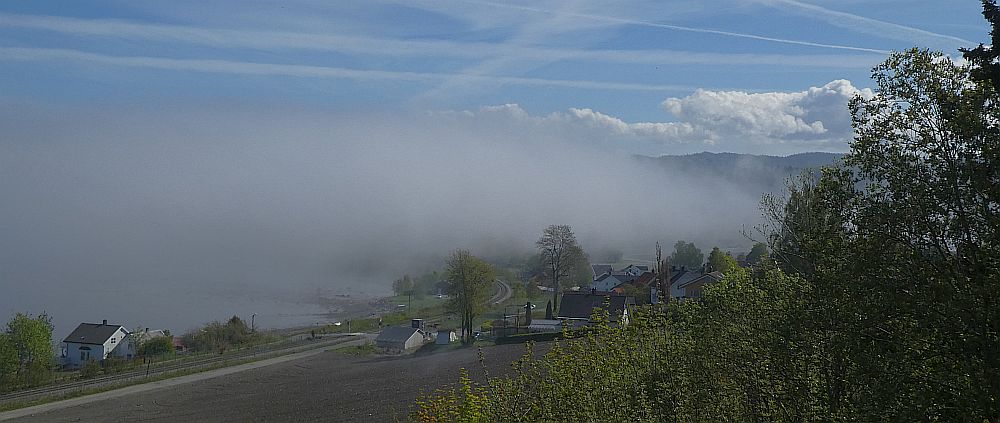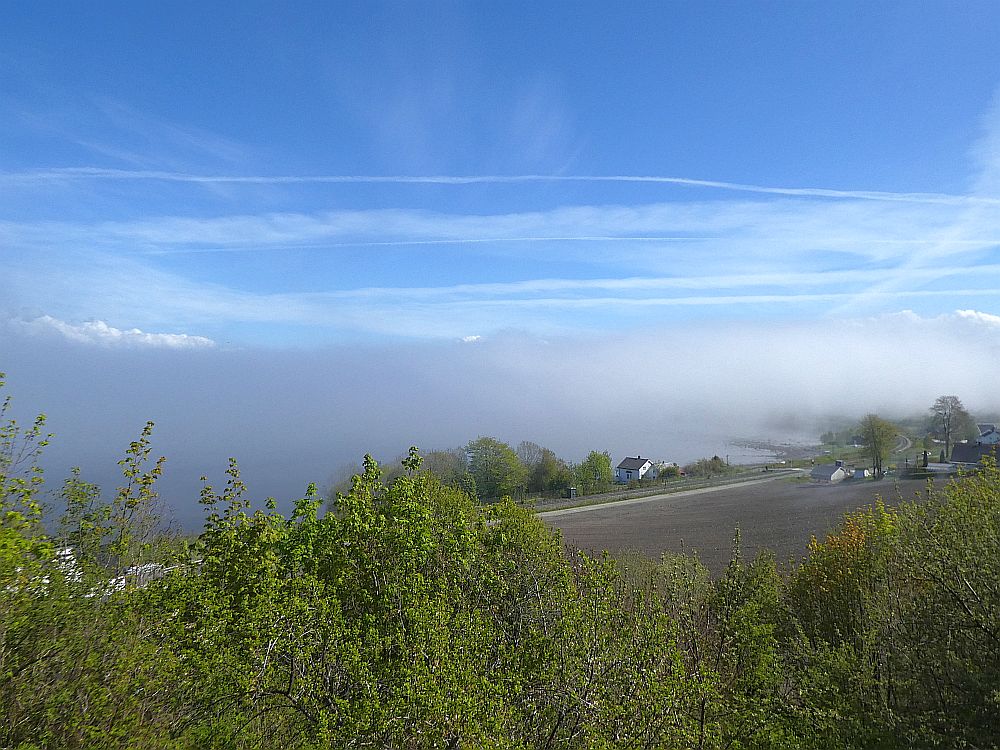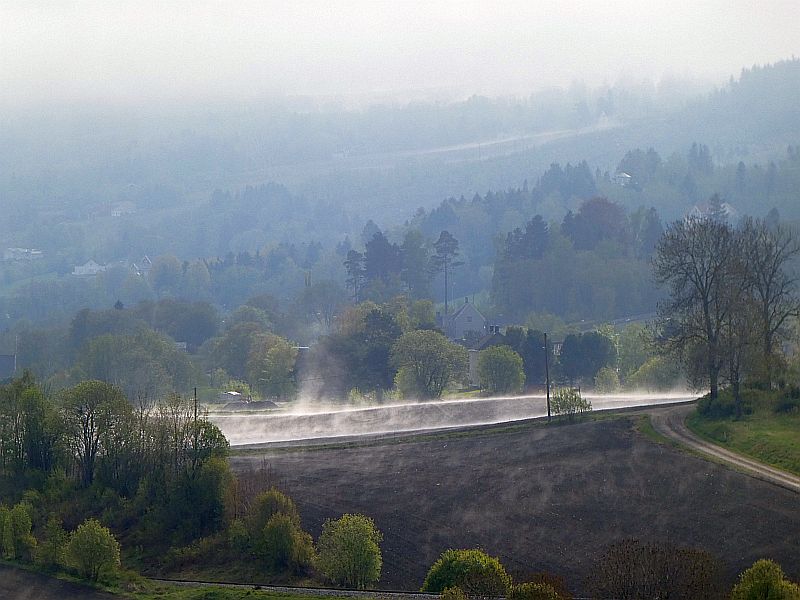Monthly Archives: May 2019
18th May over the fjord!

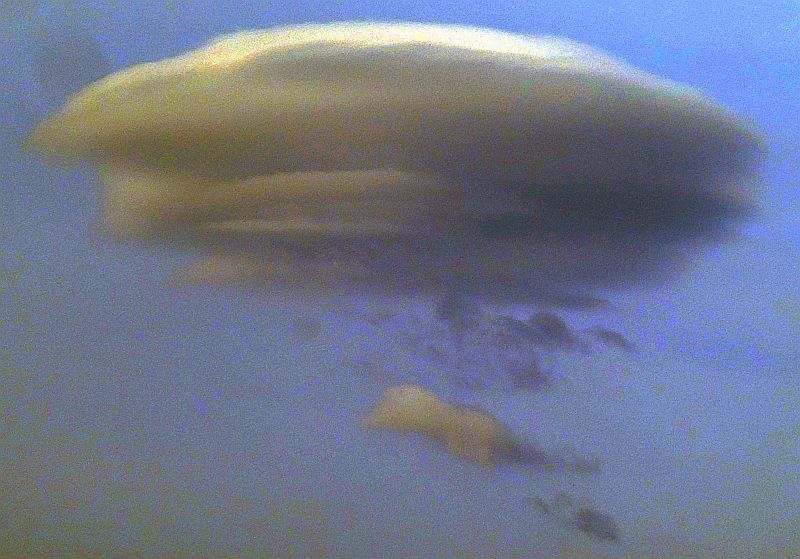
KVANN’s Annual Meeting Weekend: Day 4; Ostrich Fern hike along the Homla
On the 4th day of the Norwegian Seed Savers weekend (6th May 2019), the traditional spring walk along the Homla river and canyon was on the programme with the hope to find ostrich ferns at the right stage to pick. In the cooler parts near the river, it was too early and too late away from the river. Nevertheless, everyone who wanted to picked a few fiddleheads!
It was as usual a magical walk which took some of us 8 hours to complete….as there was so much to see and enjoy!
Thanks to all the participants who also provided pictures: Berit Børte (third time participant), new steering commitee member Bernhard Askedalen, Elin Mar (from Røst), Inger Line Skurdal Ødegård, Meg Anderson and Tina Lambert!
Ostrich Fern Paradise:
Diamondbacks are back :(
There’s been a major arrival of diamondback moths (kålmøll) here since yesterday and there are hundreds of this major Brassica pest in the garden today! I am thankfully only growing perennial kales (Brassica oleracea) and resistent sea kale (Crambe maritima) this year, both of which are already close to maximum yield and unlikely to be severely affected by the moth. This also means I don’t need to use any form of protection (horticultural fleece / fiberduk) which is probably a major source of agricultural microplastics. Problem solved!
Sea kale/strandkål (Crambe maritima):
Perennial kales (Brassica oleracea):
East meets west salad
The udo (Aralia cordata) shoots had begun to lift the forcing bucket, so time for the annual udo salad, a variant this year, East meets West salad…the udo paired with garden grown ramsons (ramsløk)! Delicious!
Primula veris mutants
Hybrids can also occur in gardens. I’ve several strains in my garden from seed, including “Sunset Shades” and “Red Strain”. I also grow the earlier flowering subspecies macrocalyx with overlarge sepals.
I use small amounts of leaves and flowers to decorate spring salads and other dishes…an undispensable shade loving and hardy edimental!
Bellflower-chokes / Storklokkeskokker
I’ve previously introduced the gourmet part of the dandelion, the dandichoke! I write in my book:
My favourite foraging author “(Samuel Thayer’s) favourite dandelion vegetable is what he calls dandelion crowns, as named originally by Euell Gibbons (1961). I prefer to call them dandichokes, as both these and artichoke hearts are located below the flowers. In the early spring, the very young flowers appear at the surface. The dandichoke is just the self-blanched crown between the top of the root, which is a bit below the surface, and the developing flowers. Although small and difficult to clean, they are very tasty”. See the picture below!

The same applies to another of the 80 in my book, Giant Bellflower (storklokke) which also has a delicious (sweet tasting) self-blanched stem between the root and the surface….bellfower-chokes or, even better in Norwegian, storklokkeskokker! I discovered this accidentally last year! I had earlier noted in my book the sweeter tasting spring shoots after blanching (covering to excude light).

Visit from Permalin
Lovely visit and the year’s first picnic last night from Permalin Farm, currently being established in Agdenes Kommune, just south of Lensvik (see permalin.no). Dominika Bučková and Håkon Nilsen estabished a student company producing delicious 100% flax flour bread in Telemark (Linbakst; see the following video in Norwegian: https://www.youtube.com/watch?v=VkGsbhMlZrI) using a method to remove cyanide from the flour, so that authority regulations to limit consumption of flax seed can be safely circumnavigated. They are now moving the business to their permaculture inspired farm in Trøndelag. I’ll be doing a workshop at the farm during their Farming in Harmony with Nature Summer Festival on 27th-28th July. See you there :)
Never before pizza?
More or less anything can be used in a pizza, but I wager these have never been used in the same pizza: Oplopanax horridum, Allium scorodoprasum, Crambe maritima (sea kale /strandkål), Ligularia fischeri and Reynoutria japonica (Japanese knotweed).

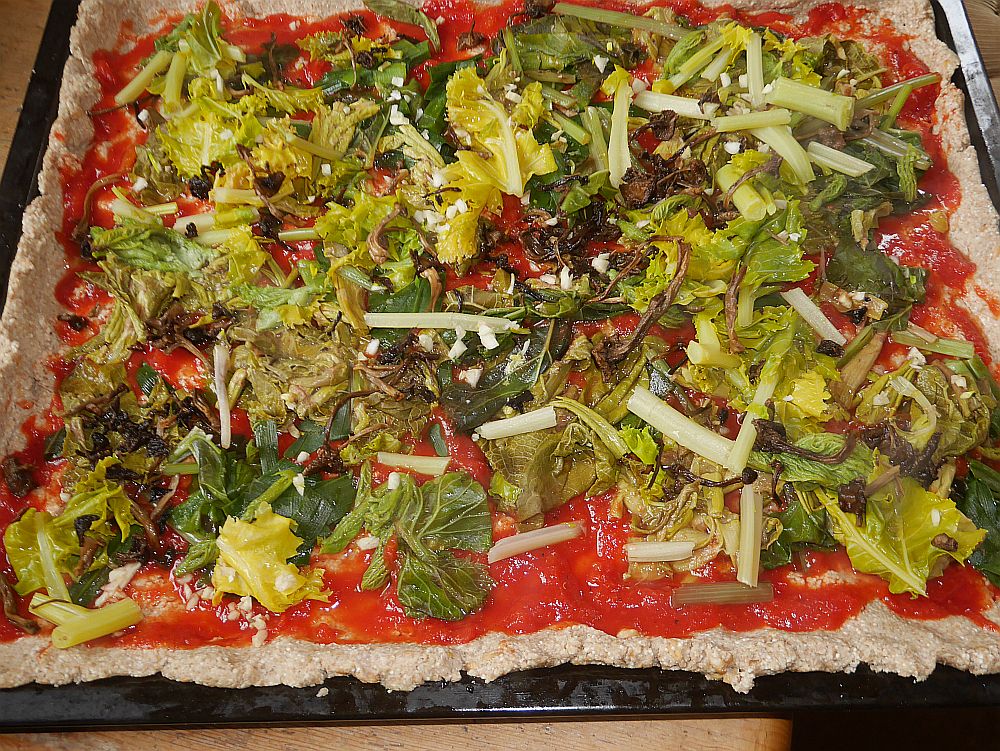
Misty morning 16th May in Malvik!
Very unusual views from the house on the hill yesterday as the weather shifted to warm and cloud-free skies! Mist and fog are very rare here, but maybe getting commoner!



